We drive over the outer edges of the French Pyrenees, fields of warm sunflowers and ripening grapes on both sides, occasionally passing a thin church tower sticking out above a tiny village. Seppe’s Mother and Step-Dad are in the process of renovating an old house in one of those villages to open a bed and breakfast in the hills. They welcome me hospitably and open some drinks on the wooden table of the terrace while Seppe grabs a book of cards. I tell stories from Porto, then Malta, but mostly I talk about Indi. Twice Seppe wins a game she taught me, one I just explained to him. Defeated, I go to bed.
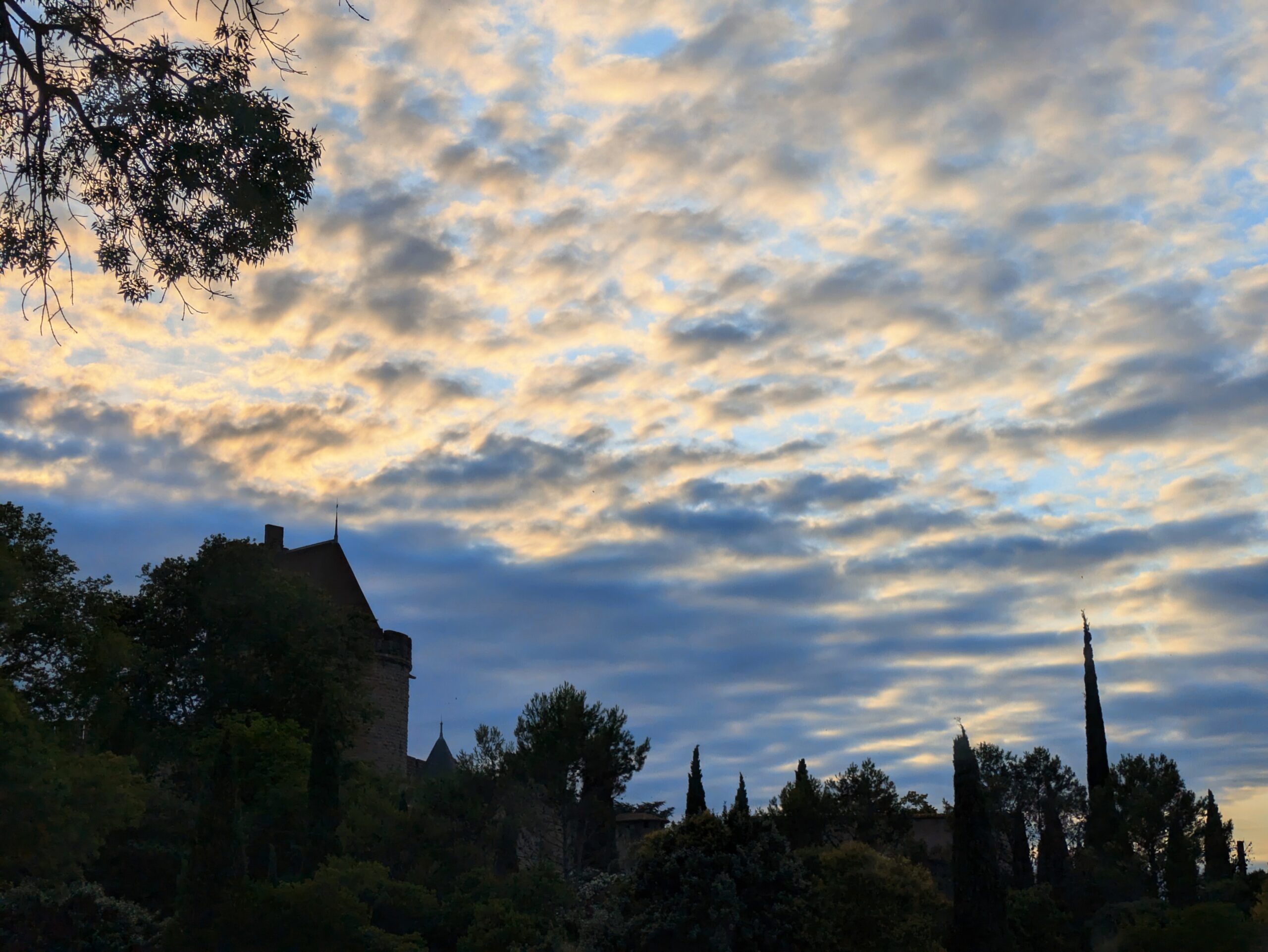
The next morning we gather on the small square at the centre of Sonnac-sur-l’Hers, home to the new bed and breakfast. With the shadow of the church and her bells falling against the facade of the opposite houses, and to the cries of hundreds of swallows and hedge sparrows in the air, we have our breakfast at a small wooden table. Roses climb the facades, contrasting nicely with the blue window blinds.
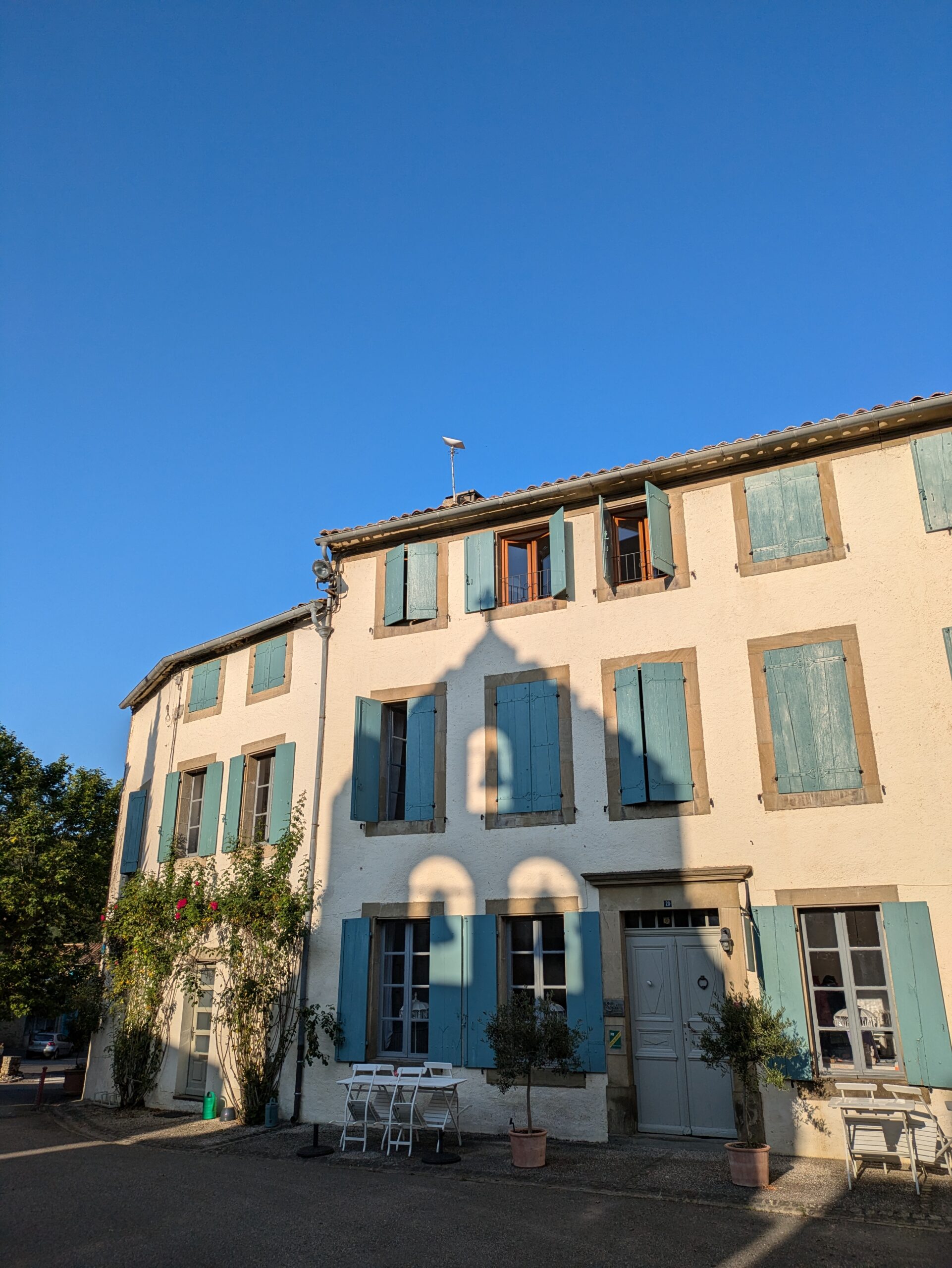
After a spectacular gorge of steep rocks and sheer cliffs, we pass through a wide valley, the former Spanish border on our left, marked by enormous castles on the tallest hills. When the border moved south, to the more secure peaks of the Pyrenees themselves, these castles fell into ruin, only serving as memories of their Cathar past. At the end of the thirteenth century, the Pope endorsed the French king to launch a crusade against his own people, officially because their way of worship was heretical, but perhaps simply because the king in Paris wanted to centralise his power. With Carcassonne as the centre, these mountain castles held off the royal forces as long as they could bear.
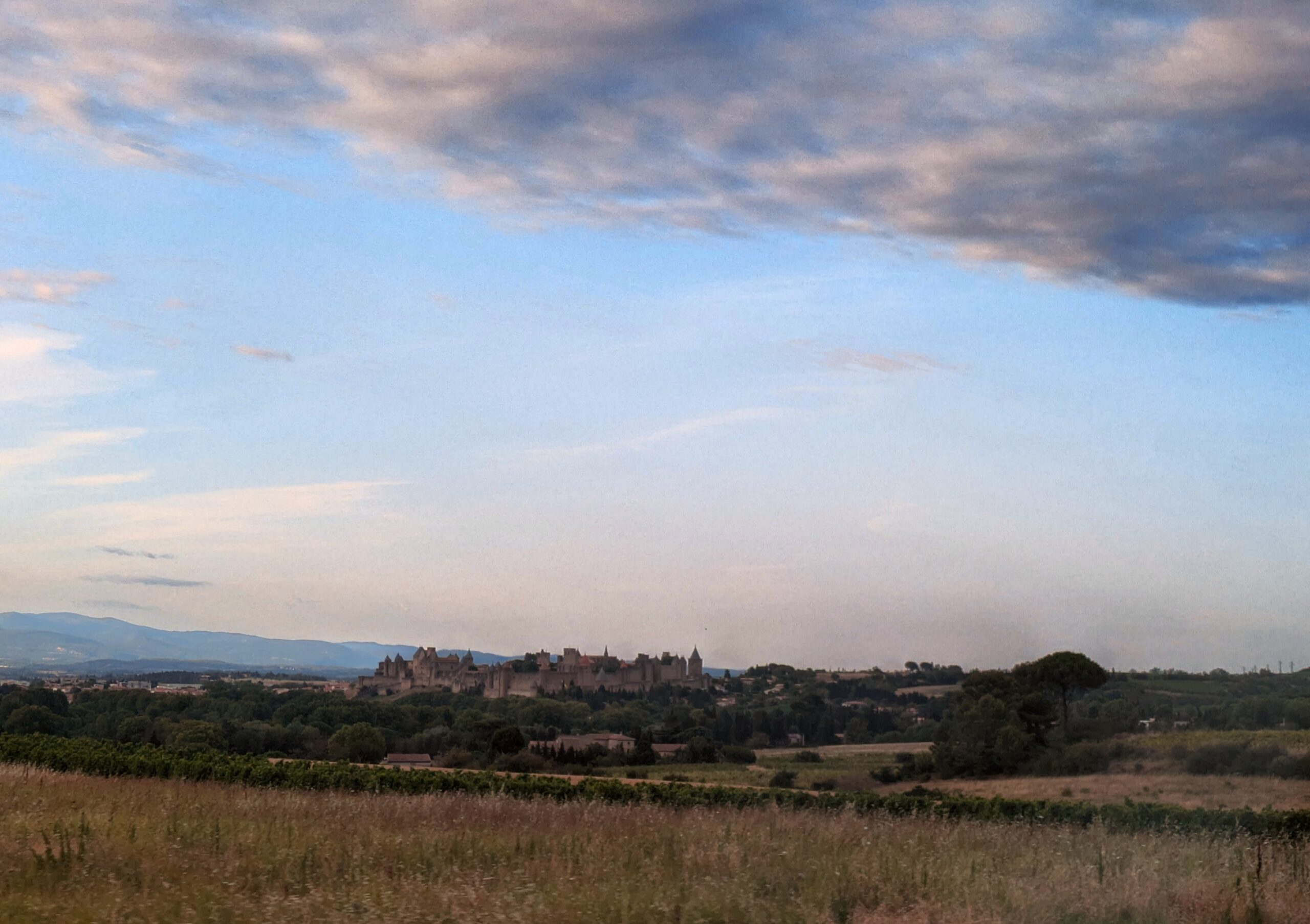
In the same vein, Perpignan is the last French city on this side of the mountains, but culturally it feels closer to Iberia than to Paris. Many people still speak Catalan, or perhaps Occitan, even though signs also carry French and sometimes Spanish translations. The high sun reigns over a blue sky and we stroll through the lively town. We enter through the Porte Notre-Dame of the Castillet, a tall and elegant brick and stone castle, adjoined to the fourteenth century gatehouse and once part of the city walls. People fill the streets, walking in the shade of colourful ornaments strung between the buildings.

At lunch, Seppe asks for half a litre of white wine, suddenly remembering he still has to drive, earning me most of the carafe while we enjoy some duck and linguini. He relates tales about a recent date, and I ask question after question to figure out who this newly discovered Elise might be. Perhaps another meeting awaits this weekend, as he hopes to take her out to a nice dinner back home. First, and with new energy from our lunch, we visit the Palace of the Majorcan Kings, who ruled these lands before the infamous Sun King, Louis XIV, annexed them to expand his French dominion.
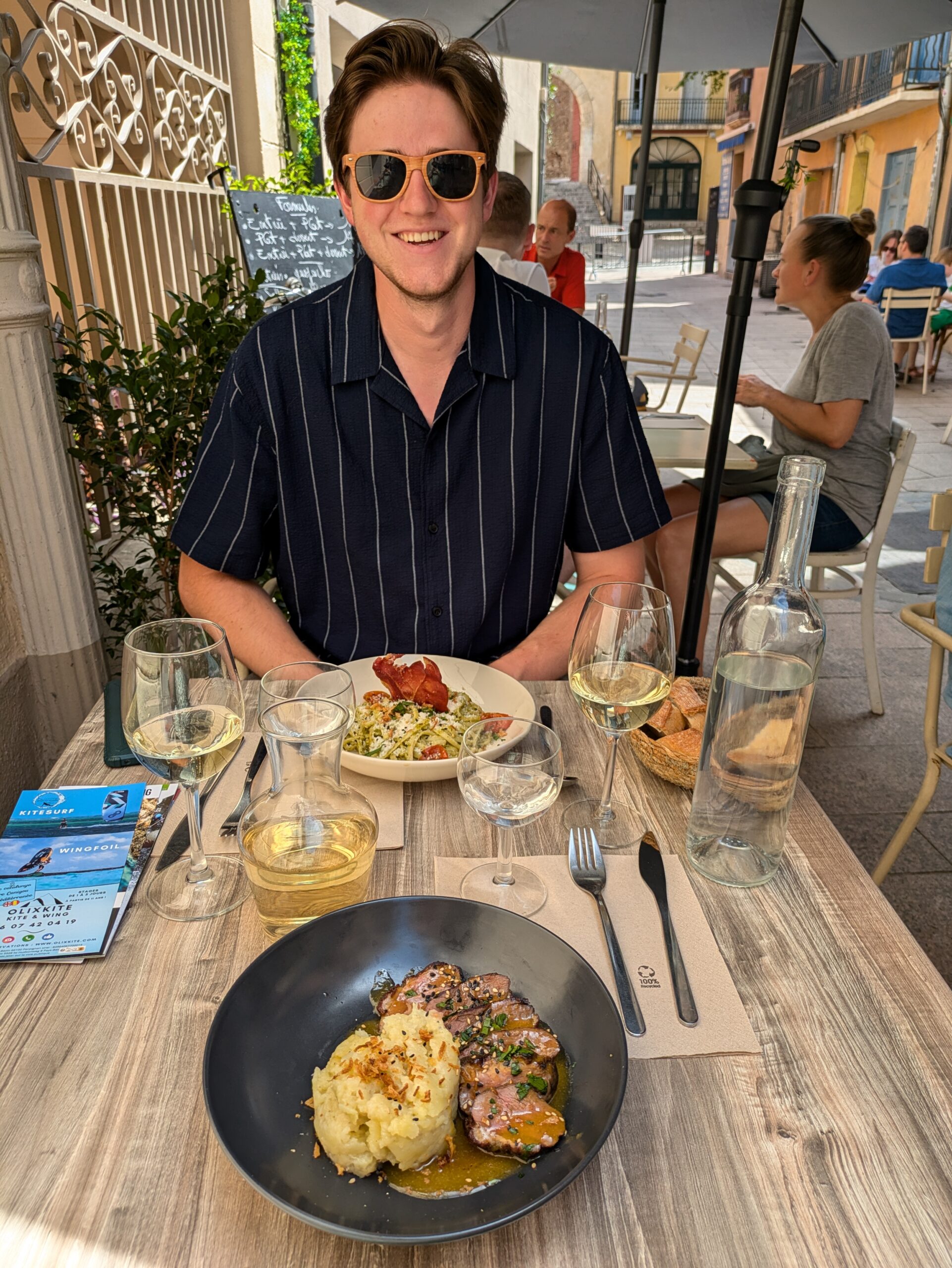
The coastal road, perhaps built on the ruins of the Roman Via Domitia, linking Italy to Spain, leads us between low, rolling hills bringing us to Narbonne, once the capital of Provincia Gallia Transalpina, Gaul across the Alps, still remembered today as the Provence. Seppe buys an ice-cream as a refresher while we gaze upon the great Palace of the Archbishops, a collage of different styles from different ages, connecting blank mediaeval towers with elegant gothic arches and everything in between.
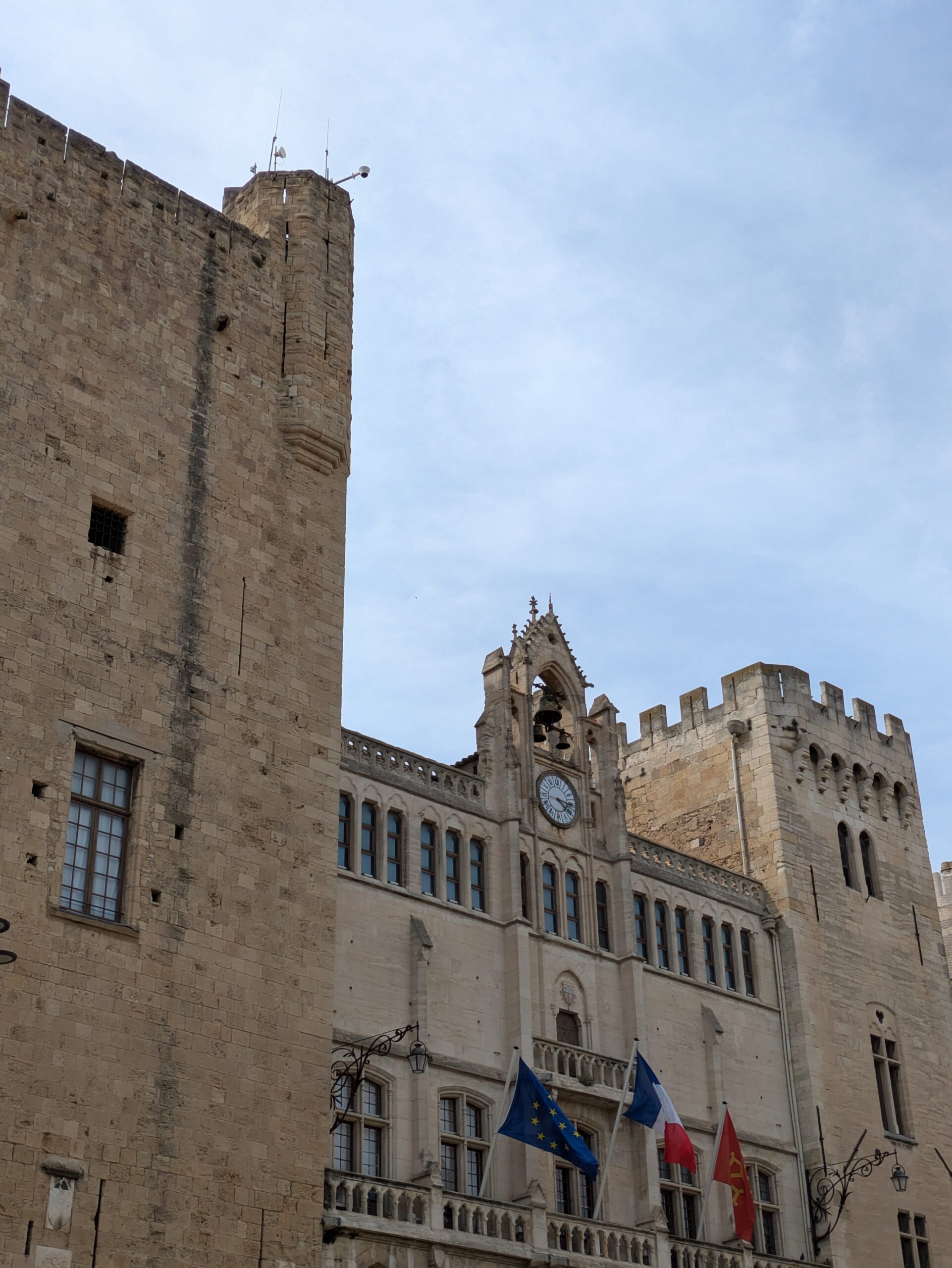
We continue on the Via Domitia, leading us north to Béziers, a small town atop a hill, cut by the river Orb. Atop of the apse, on the outside of the cathedral, among a net of flying arches and fine spires, stands a golden woman, shining brightly among the gray stones, backed by the patterned clock tower. She reminds me of my girlfriend, and suddenly I miss her dearly. To assuage the melancholy we descend the tall hill of Béziers, crossing the long and winding bridge over the Orb. From the flowery park across the river we enjoy a beautiful view of the city, its old cathedral at the summit, surrounded by smaller palaces, fortifications to guard against uncouth visitors and greenery stick between buttresses and smaller towers leading down to the water’s edge. The many arches of the Roman bridge seem to carry this elegant jewel.
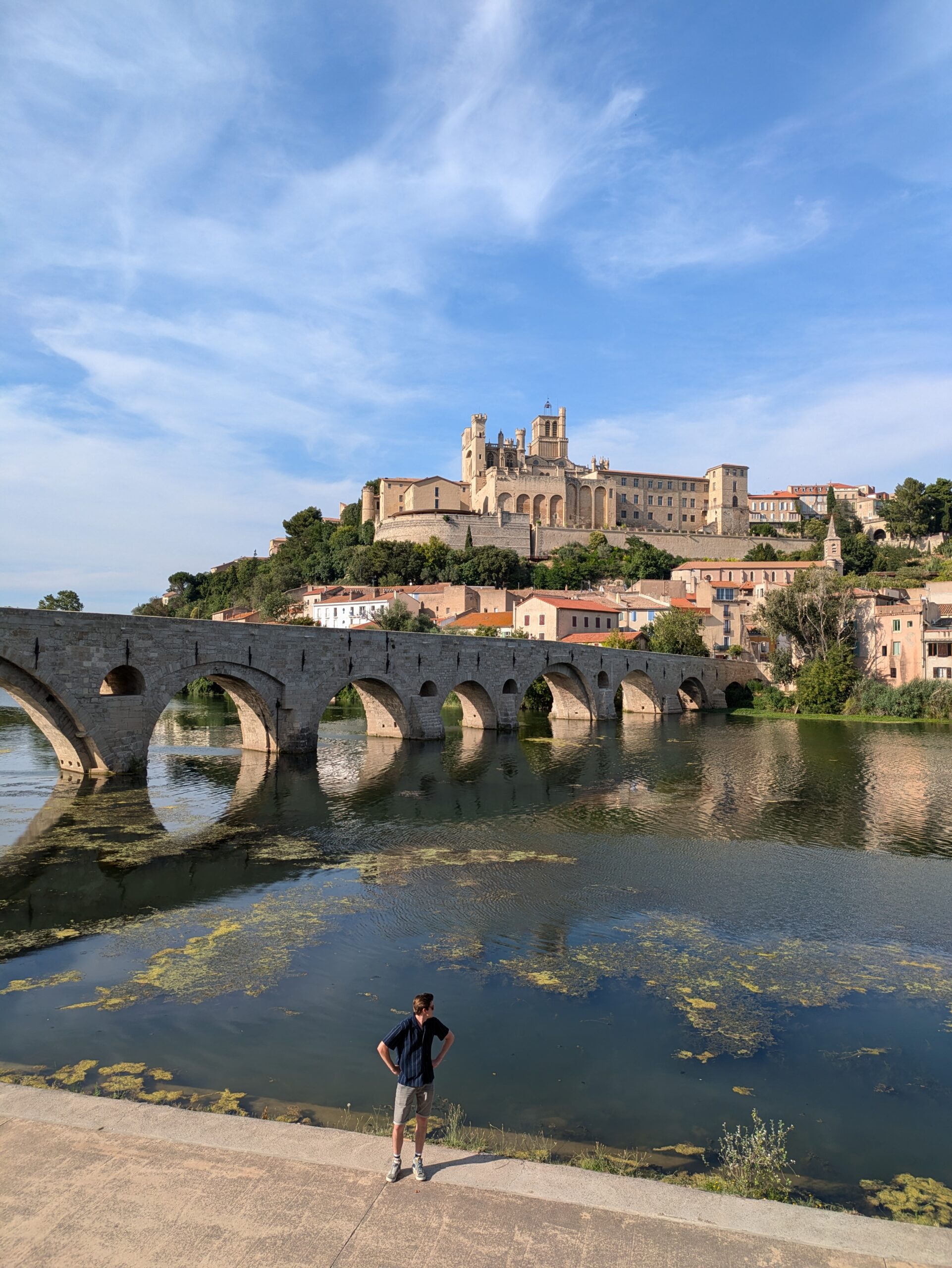


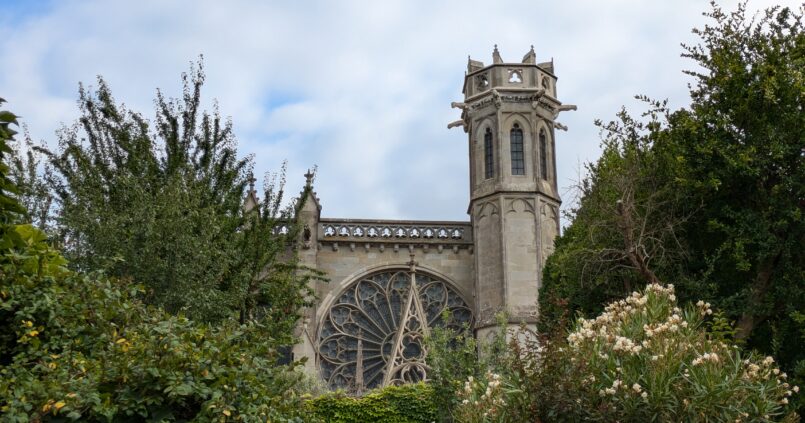

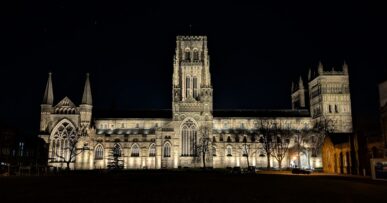
Comments (5)
Waarom schrijf je niet in het Nederlands? Dan kan je toch beter gevoelens en indrukken overbrengen?
Very nice big man *duimpje*
Exceedingly tall giant man
Orb is een cool naam voor een rivier :0
Seppe and I were talking about that too! (And then Perpignans river is called the Tet, which seems questionable)